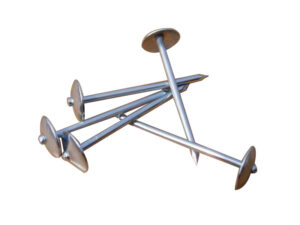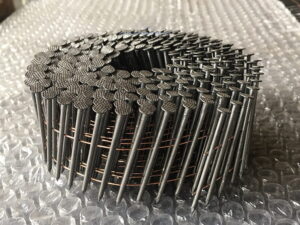Nail making machines are an integral part of many manufacturing and construction processes. As demand for nails continues to grow globally, nail production has become increasingly automated. Nail making machines offer improved efficiency, cost savings, quality, and flexibility compared to manual nail making.
As a professional nail making machine manufacturer, I explore the key benefits enterprises can realize by incorporating nail making machines into their production workflow. Whether starting a new nail production factory or looking to scale an existing business, this guide covers the core advantages these machines provide.

What are the Advantages of Using a Nail Making Machine?
Efficient, High-Volume Nail Production
Nail making machines deliver vastly improved productivity over handmade nail manufacturing. By automating the entire production process in a continuous sequence, these machines can output nails at very high speeds.
For example, advanced rotating nail making machines like the Euro High-Speed Nail Machine can produce 1,000-2,000 nails per minute. That’s nearly 10 times faster than traditional nail making machines. This efficiency enables a single machine to generate 2.5-3 tons of finished nails daily.
Higher nail production volumes translate directly into greater revenues and profits. With automation, enterprises can meet market demand faster and more cost-effectively.
Lower Investment Risks
Opening any manufacturing facility requires significant upfront capital expenditure. However, nail production involves relatively less financial risk than many other industries.
That’s because the primary raw material is steel wire, which has intrinsic value. If faced with declining nail orders, companies can sell off excess steel inventory to recover much of the initial investment.
Nail making machines themselves also retain substantial resale value after a few years of depreciation. So owners face less uncertainty if they decide to exit the market or switch production lines.
Flexible Production Scalability
Nail making machines enable companies to adjust outputs based on real-time demand trends. Owners can operate profitably with small urban factories or large rural production plants.
The modular nature of automated nail production lines allows for scaling. Companies can add machines incrementally to match supply with orders. This flexibility ensures optimum utilization of capital investments in the machines.
Seasonal demand surges, new client contracts, and overseas export orders can be readily fulfilled without major overhauls. This protects the balance sheet from extended lead times or large-batch nail inventory build-ups.
Recycling Steel Scrap for Environmental Gains
Nail making machines promote sustainability through recycling steel scrap as the raw material input. This includes reuse of discarded steel bars, sheet metal cuts, filings, and other residuals.
Turning trash into resource inputs cuts waste generation while meeting nail quality standards. Closed-loop steel recycling also drastically lowers carbon emissions associated with metal production.
So enterprises can derive triple benefits – environmental stewardship, material cost savings, and new revenues out of scrap resources. With increasing adoption of ESG frameworks globally, nail production via recycling offers green credentials.
Reliable Cash Flows and Profit Potential
Nail manufacturing serves as a steady avenue for earning revenues since nails have year-round market demand. With efficient machines, companies can ensure timely supplies even for bulk orders or customized nail designs.
Gross margins in nail production can hit 30-50% levels, translating into sound profitability. And by utilizing scrap metals and saving on manual labor, nail makers further boost their net earnings.
Over long periods, seasoned players in this sector remain insulated from severe demand shocks. They build loyal B2B customer bases comprising construction contractors, furniture makers, pallet manufacturers, etc.
Low-Maintenance Operations
Modern computerized nail making machines are designed for reliable, low-maintenance functioning. Built using quality components and advanced sensors, runtime failures are minimized.
Self-lubrication, automated voltage/frequency regulation, high-precision cutters, and dust shields enhance robustness while needing minimal manual supervision.diagnostics help detect emerging issues early.
When correctly operated per protocols and maintained proactively, nail making machines deliver years of consistent outputs. Preventive upkeep is far more cost-effective than unexpected breakdown repairs too.
Broad-Based Market Applications
Another advantage is the immense market reach for nails across industries. Key application segments include:
- Construction – Framing, roofing, fencing, etc.
- Furniture & Interiors – Assembling wooden cabinets, tables, etc.
- Automotive & Appliances – Metal sheathing, fittings, etc.
- Industrial Crates & Pallets – Nailing wooden pallets.
- Arts, Crafts & Hobbyists – Custom home décor projects.
Nail makers can cater to small boutique clients and large industrial players alike. With flexible nail making machines, they produce varied nail sizes, tips, groove types to meet assorted usage requirements.
By widening the target customer base, enterprises ensure more stable year-round offtake even if one or two sectors face temporary activity declines.
Added Value-Added Nail Production
Innovative manufacturers move beyond basic nail production by offering additional benefits:
- Improved nail strength via tempering heat treatment to prevent easy bending.
- Corrosion-resistant metal coatings for extended outdoor nail usage.
- Colored plastic caps on nail heads for branding and product differentiation.
- Custom length nails for niche applications like framing historic buildings.
Value-added nail types command higher realizations of $10-25 more per ton. Specialized niche variants allow capturing greater margins too. Such differentiating factors are achievable only with automated nail making machines.
Key Takeaways
- Nail making machines sharply boost productivity and sales revenues.
- They offer flexible scale-up options to match rising market demand.
- Operational costs are lower via scrap metal recycling and process automation.
- Consistent quality outputs across long equipment lifetimes.
- Broad application scope spanning multiple industries.
In Summary
For nail manufacturers intent on increasing production without expanding manual labor, automated nail making machines are the way forward. After the initial capital investment, such equipment delivers multiply benefits from an operational excellence, profitability and sustainability standpoint.
With their precision engineering and versatile configurations, modern nail making machines will catalyze the next growth phase for this vital industry by 2025.






